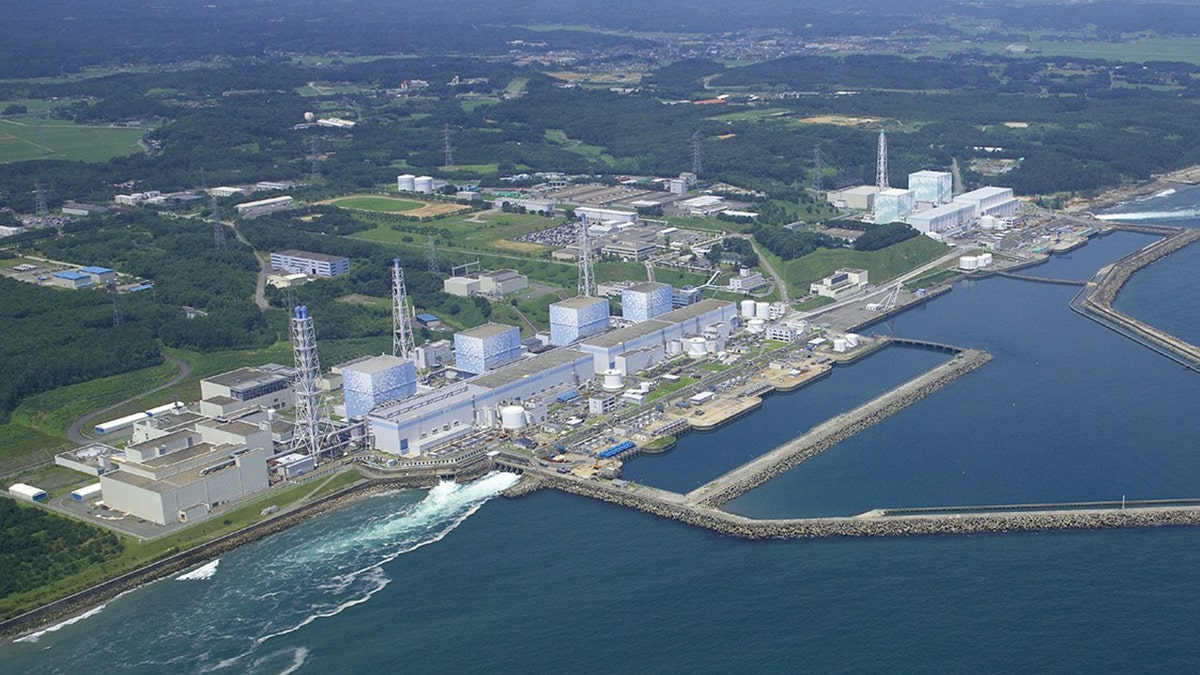
The Fukushima Daiichi Nuclear Power Plant reactors stand in line intact in Okuma town in Fukushima Prefecture, northeastern Japan. Radiation has covered the area around the Fukushima Dai-ichi plant and blanketed parts of the complex, making the job of rendering the plant safe so that it doesn't threaten public health and the environment, or "decommissioning", a bigger task than usual. (AP2011)
TOKYO-- Japan feared three months after the Fukushima nuclear power plant was hit by a tsunami that aftershocks could further damage one of its fuel storage pools, causing rods inside to melt and spew radiation within hours, according to a newly released document.
The Japan Nuclear Energy Safety Organization said it carried out a simulation that showed some 1,500 mostly used fuel rods at the plant's No. 4 reactor building could start breaking in two hours if aftershocks further damaged the pool and caused cooling water to escape. The fuel rods could start melting within eight hours, the organization said in a report dated June 30 and published Friday.
The report shows that the pool remained vulnerable for nearly four months until its operator completed reinforcement work in July. Tokyo Electric Power Co. had said before then that the building could withstand major aftershocks without reinforcement, but made repairs after acknowledging structural damage and water leaks from the pool area.
The March 11 quake and tsunami triggered meltdowns at the plant's three reactors. Explosions also damaged their buildings, plus Unit 4 next to them.
The simulation was based on a scenario that cooling water was lost in the Unit 4 spent fuel storage pool, located on the top floor of the building. The Unit 4 pool was considered high risk as it contained more fuel than the other three pools, as it also stored fuel rods that had been moved from the unit's reactor core, which was being fitted with new parts.
In the report, the government-funded JNES said a loss of pool water due to additional cracks from aftershocks could cause the fuel rods to overheat. Their casings could break and start spewing radiation in about 2 hours. Fuel pellets inside each rod could start melting within 7.7 hours at about 2,800 Celsius (5,000 Fahrenheit), it said.
The report was part of hundreds of pages of documents containing simulation results on dozens of accident scenarios by JNES earlier in the crisis.
Plant workers are still struggling to contain radiation still leaking from the plant, although the amount is far less than before.
TEPCO said Friday that Unit 1 -- one of the most damaged buildings -- now has an outer shell made of airtight polyester designed to contain radioactive particles inside the building. Similar covers are also planned for other buildings.
Government officials are also making massive decontamination efforts in areas around the plant, from where tens of thousands of people had to evacuate.
Recent discoveries of radiation "hot spots" in and around Tokyo have also caused fears among people there, where many concerned parents routinely check their neighborhoods for radiation.
In most cases the reading is estimated to be below the internationally accepted annual limit, but critics say the standard exceeds Japan's cap before the accident and the government should expand the scope of decontamination.
